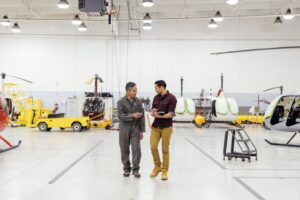
Three future government scenarios you can start enabling now

What does government in 2030 look like? According to this Gartner report, the future may include governments significantly increasing their use of artificial intelligence (AI) to gain predictive insights that can help them improve services. And Gartner encourages governments to get started on enabling that kind of predictive government now.
We’re working with our partners to help your government agency do just that. You can take advantage of AI and advanced services solutions from our partners to amplify human ingenuity—and create the future you envision based on your agency’s specific challenges and aspirations.
In the report, Gartner highlights three areas that can be digitally transformed with emerging technologies: public safety, taxes and revenues, and human services. You can start improving outcomes in those three areas right now with intelligence-driven solutions from our partners. Here are just a few examples:
Revolutionizing search and rescue
InDro Robotics offers a solution that governments can use to transform search and rescue. Drones can be sent out to scan and take images of a coastline looking for anomalies—such as a capsized boat or a lifejacket. Using the Microsoft Custom Vision cognitive service, InDro Robotics’ solution can detect emergencies automatically. It can then send images of concern to dispatchers so they can view them and determine if a search and rescue team needs to be sent out—and based on the images, the team and equipment needed. It’s a great example of AI and humans working together to improve outcomes.
Preventing tax fraud
Another way that AI is supporting government teams and helping them tackle some of their toughest challenges comes from SmartCloud. Its AI-driven solutions for fraud prevention and compliance monitor business-to-business and business-to-consumer transactions in real time, or near real time, to detect and respond to suspected fraud and non-compliance situations.
Tax officials are deluged with data and even when they’ve determined patterns of vendor behavior to help them detect fraud, those patterns often change as vendors continually find new ways to avoid detection. Machine learning can process vast amounts of data and detect fraudulent patterns—even as new ones emerge—and continually get better at doing so.
Once the SmartCloud solution pinpoints potential fraudulent activity, tax officials can review the activity and determine the appropriate follow up and whether they need to investigate a non-compliant business.
In other words, government agencies can use the solution so their tax officials can spend less time poring over data and more time following up to collect unpaid revenues. Learn more about SmartCloud’s Tax Compliance solution here.
Empowering better human services
Two of our partners that are empowering government agencies to improve their human services for vulnerable populations using intelligent platforms are Bismart and EY.
Compiling and analyzing data from a wide range of different sources, Bismart’s solution identifies vulnerable populations. It predicts which groups in which areas need the most help, as well as what kind of help they need. That way, government teams can use the insight to target services and resources accordingly.
Similarly, EY is helping government agencies to identify children that may be at risk with solutions that apply advanced analytics to aggregated big data—data that was previously siloed in separate departments. Agencies can use that insight to intervene early with at-risk children and help prevent adverse outcomes. They can also make the best use of their case workers’ time by using the insight to prioritize caseloads and tailor services based on those children’s needs.
Create the future you envision
Virtually any area of government can take advantage of intelligent platforms to help it achieve its mission and address its specific goals. To learn more about how your agency can create the future you envision, read the Gartner report: “Digital Government 2030: Predictive Government Anticipates Citizen Needs With Autonomous Services.”
Rita Tenan is Senior Director, Government Industry EMEA, Microsoft
Omar Rashid is Regional Leader, Government Industry Americas, Microsoft




